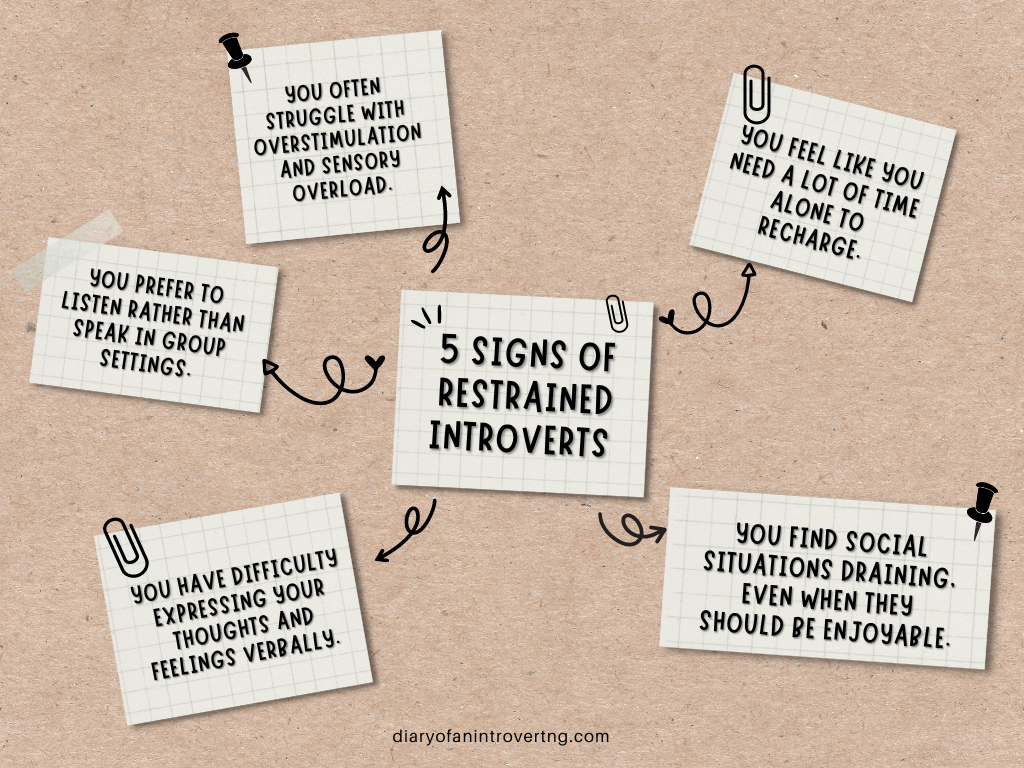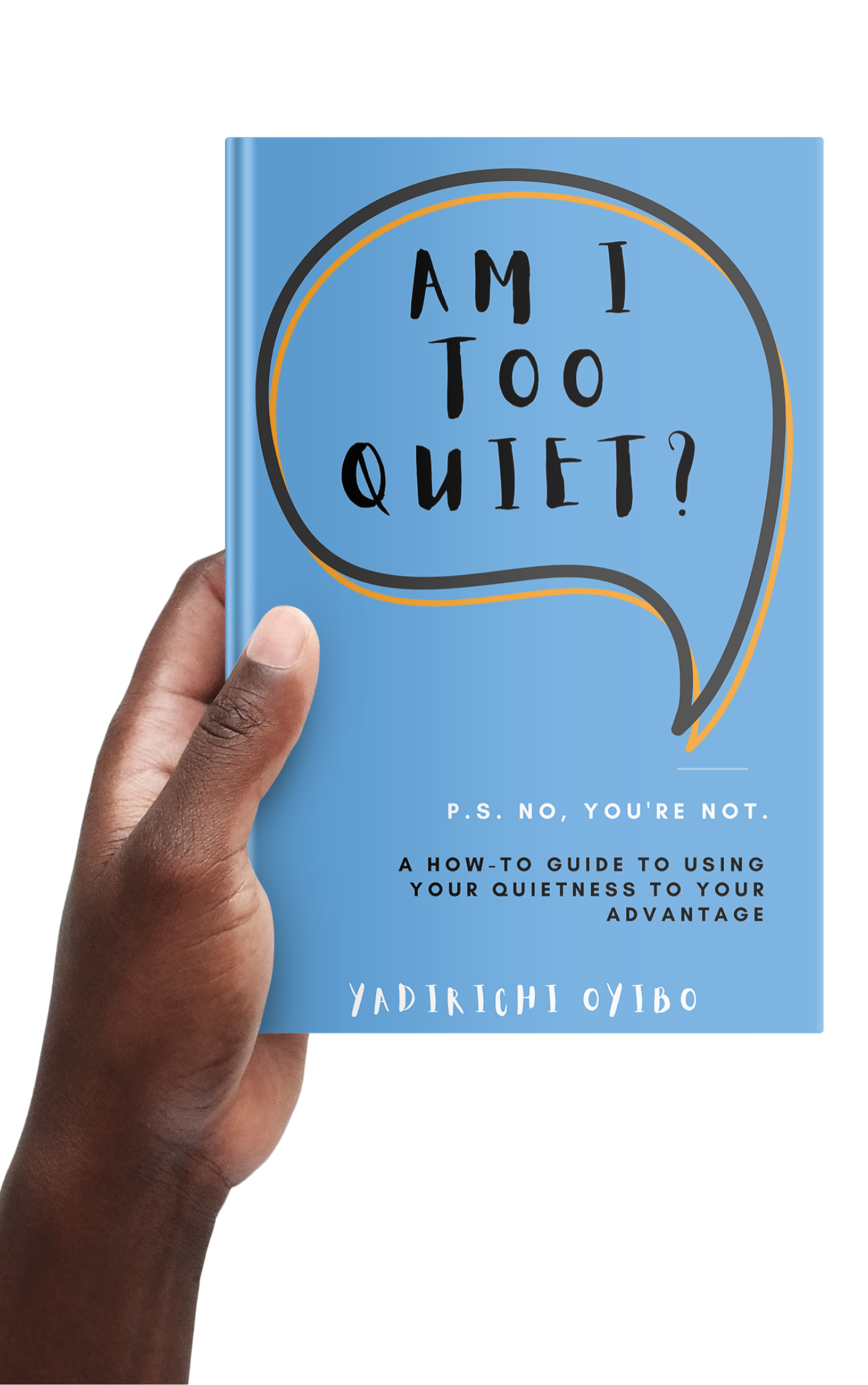What is a Restrained Introvert? 5 Easy Ways to Tell You're One
Photo by Ekoate Nwaforlor on Unsplash
Are you an introvert who sometimes holds back in social situations? You might be a restrained introvert!
What is a restrained introvert? A restrained introvert is someone who exhibits introverted tendencies but may also limit their expression of these tendencies in social situations.
It's really important to understand introverted tendencies because it helps you embrace who you really are.
When you're self-aware and recognize your natural preferences, you can feel more confident and fulfilled in your personal and professional life.
Plus, understanding introverted tendencies can help dispel myths about introversion. More so, promote greater acceptance of introverted individuals in society.
In this article, we’ll explore the concept of a restrained introvert and provide five easy ways to determine if you are one. We’ll also discuss introverted tendencies, characteristics, benefits, and strategies for embracing your introverted nature.
But first… Where did the term ‘Restrained Introvert’ come from?
This concept of ‘restrained introvert’ was first introduced by psychologist Dr. Laurie Helgoe in her book "Introvert Power: Why Your Inner Life Is Your Hidden Strength."
Dr. Helgoe's work highlighted how restrained introverts may face challenges in a society that tends to value extroverted behavior over withdrawn traits.
The standard is to be outgoing, assertive, and sociable, which can be difficult for introverted individuals to sustain. Therefore, the pressure to conform to these demands may lead some introverts to hold back their natural tendencies in social situations.
This also causes them to feel misunderstood or even undervalued.
However, Dr. Helgoe's concept of restrained introversion has helped shed light on the experiences of restrained individuals.
This has led to the availability of tools and strategies for embracing and celebrating the introverted nature.
Is Being a Restrained Introvert a Good Thing?
Being a restrained introvert has its strengths and weaknesses - as with any other personality type.
One strength is that restrained introverts often possess strong listening skills and can be excellent observers of the world around them. They are thoughtful and reflective, able to process information deeply and make connections that others might miss.
This also makes them excellent problem-solvers and critical thinkers. Restrained introverts are also typically very self-aware, understanding their own needs and limits and trying to manage their energy levels.
However, some potential weaknesses come with being a restrained introvert. One is that they may struggle with expressing themselves in social situations, often feeling uncomfortable or overlooked in group settings.
This can lead to a sense of social isolation and difficulty in forming close relationships.
Additionally, restrained introverts may struggle with assertiveness. They may feel hesitant to speak up and share their ideas or opinions, leading to missed opportunities or challenges in the workplace or other areas of life.
Nonetheless, being a restrained introvert is neither inherently good nor bad. It is simply a different way of processing and engaging with the world.
By understanding the strengths and weaknesses associated with restrained introversion, individuals can work to capitalize on their strengths and mitigate their weaknesses. This will lead to greater personal and professional fulfillment.
5 Signs You're a Restrained Introvert.
You have difficulty expressing your thoughts and feelings verbally.
While introverts tend to think deeply and reflect on their thoughts and emotions, restrained introverts may struggle to articulate those ideas and feelings verbally, particularly in group settings or when under pressure.
They may feel more comfortable expressing themselves in writing or in one-on-one conversations. This difficulty in verbal expression can lead to frustration and feelings of being misunderstood or overlooked in social situations.
However, it is important to note that this is a natural tendency and not a flaw. There are strategies for managing and improving verbal expression for restrained introverts.
For example, as a restrained introvert, I write down speeches if I need to speak publicly. This helps me stay coordinated and communicate without struggling.
I read what I have to say a minimum of three times, which might seem tedious. But, it’s the price I have to pay if I want to share my ideas with the world.
2. You prefer to listen rather than speak in group settings.
A common sign that you’re a restrained introvert is your preference for listening rather than speaking in group settings.
Restrained introverts are often thoughtful and reflective, preferring to take in information before forming opinions or sharing their thoughts.
In a group setting, they may feel overwhelmed or uncomfortable with the fast-paced nature of group conversations, opting to listen and observe rather than contribute.
This can be mistaken for shyness or disinterest, when it’s not.
Restrained introverts find ways to contribute in their own way, which makes them feel more comfortable and engaged in group settings.
3. You find social situations draining, even when they should be enjoyable.
You might enjoy spending time with others, but still, feel like you need enough time to recharge afterward. This is one of the most common signs you’re a restrained introvert.
It can sometimes be mistaken as you being uninterested or aloof, but in reality, you find social situations overwhelming and tiring.
By setting boundaries for socializing, restrained introverts can maintain their energy and enjoy socializing without feeling like it's a burden.
Personally, I learn from experience. I’m usually eager to interact with people, and I may even get sad when I don’t have anyone to talk to. However, when I eventually start socializing, I get drained faster than I imagined.
I’ve learned to balance my need for social interaction with the reality of my energy level. Even though I desire something, it doesn’t mean my introverted tendencies can handle it.
4. You feel like you need a lot of time alone to recharge.
Another of the most prominent signs of being a restrained introvert is needing more time alone to recharge.
While all introverts need to recharge their energy, restrained introverts may require more time and space to reflect and process their thoughts and emotions.
This is not necessarily different from regular introverts, but the level of need for alone time may be more pronounced for restrained introverts.
For example, there are days when I feel like staying indoors without picking up any calls. Some people might not understand this phase of mine and might even misinterpret it as arrogance.
However, the more people can respect a restrained introvert’s need for alone time, the more we can maintain a healthy balance in our social and personal lives.
5. You often struggle with overstimulation and sensory overload.
Restrained introverts experience overstimulation and sensory overload largely due to how they process information compared to extroverts or non-restrained introverts.
The term ‘restraint’ is characterized by a tendency to inhibit one's behavior, thoughts, and emotions. This can lead to a more inward focus and deeper processing of information, further resulting in a greater sensitivity to external stimuli.
With this, restrained introverts may be more sensitive to social cues and the emotional states of those around them, which will cause feelings of overstimulation.
If you tend to feel this way, then it’s a characteristic of the restrained introvert personality type.
Liking this article? Join our Introvert Club→
How to Make the Most of Your Restrained Introversion.
Embracing your restrained introversion is super important because it allows you to be true to yourself and live a more fulfilling life.
It's like finally finding the puzzle piece that completes you!
By understanding and accepting your unique traits, you can improve your overall well-being and build better relationships with others.
Plus, you'll be able to communicate more effectively with those around you, even if they don't share your personality type.
These are some ways to embrace your restrained introversion and let your true self shine:
Learn to manage social anxiety.
Find quiet, calming spaces to retreat to and engage in activities that bring a sense of peace and tranquility.
Mindfulness techniques such as deep breathing or meditation can also help to manage anxiety and promote a sense of calm.
Additionally, restrained introverts can benefit from setting boundaries around social engagements and communicating their needs clearly with others.
Practice assertiveness.
Another strategy to help you embrace your restrained introvert personality type is to develop your assertiveness skills. This means learning how to say "no" to social situations or events that feel overwhelming. More so, advocating for yourself in group settings.
Assertiveness can also involve setting realistic expectations for yourself and communicating those expectations to others. This will help reduce feelings of stress around socializing, and promote a greater sense of control and confidence.
Lastly, seek out social situations that align with your interests and values, rather than feeling pressured to attend events simply to fit in or please others.
Be self-aware and protect yourself.
Self-awareness and boundary-setting are important tools for any individual to lead a healthy and balanced life.
But, they are particularly crucial for restrained introverts.
Restrained introverts tend to be more sensitive to external stimuli. They may also be more prone to overexerting themselves or neglecting their own needs to accommodate others.
By developing a strong sense of self-awareness and understanding your own limits and boundaries, you can avoid burnout and maintain healthy relationships with others.
Setting boundaries can also help them avoid feeling guilty or overwhelmed when saying no to social engagements or other requests.
Use your introverted strengths.
Before you can embrace restrained introversion, you need to recognize your introverted strengths in social and professional situations.
For example, restrained introverts often excel at tasks that require deep focus and concentration, making them well-suited for analytical and detail-oriented work.
They also tend to be good listeners and observers, which can be an asset in social situations as they are able to pick up on nonverbal cues and show genuine interest in others.
By understanding and leveraging these strengths, restrained introverts can approach social and professional situations with greater confidence and success.
It's important for you to recognize that introversion is a valuable personality trait that can bring special advantages to any situation.
Over to You…
If you identify as a restrained introvert, it's important to recognize and honor your unique personality traits. Embrace and celebrate your introverted nature by finding ways to recharge, setting boundaries when needed, and seeking out environments that allow you to thrive. Remember, being a restrained introvert is a beneficial and important part of who you are. Like this article?Share your thoughts below.
Live Your Best Quiet Life
Get the Am I Too Quiet? book →














